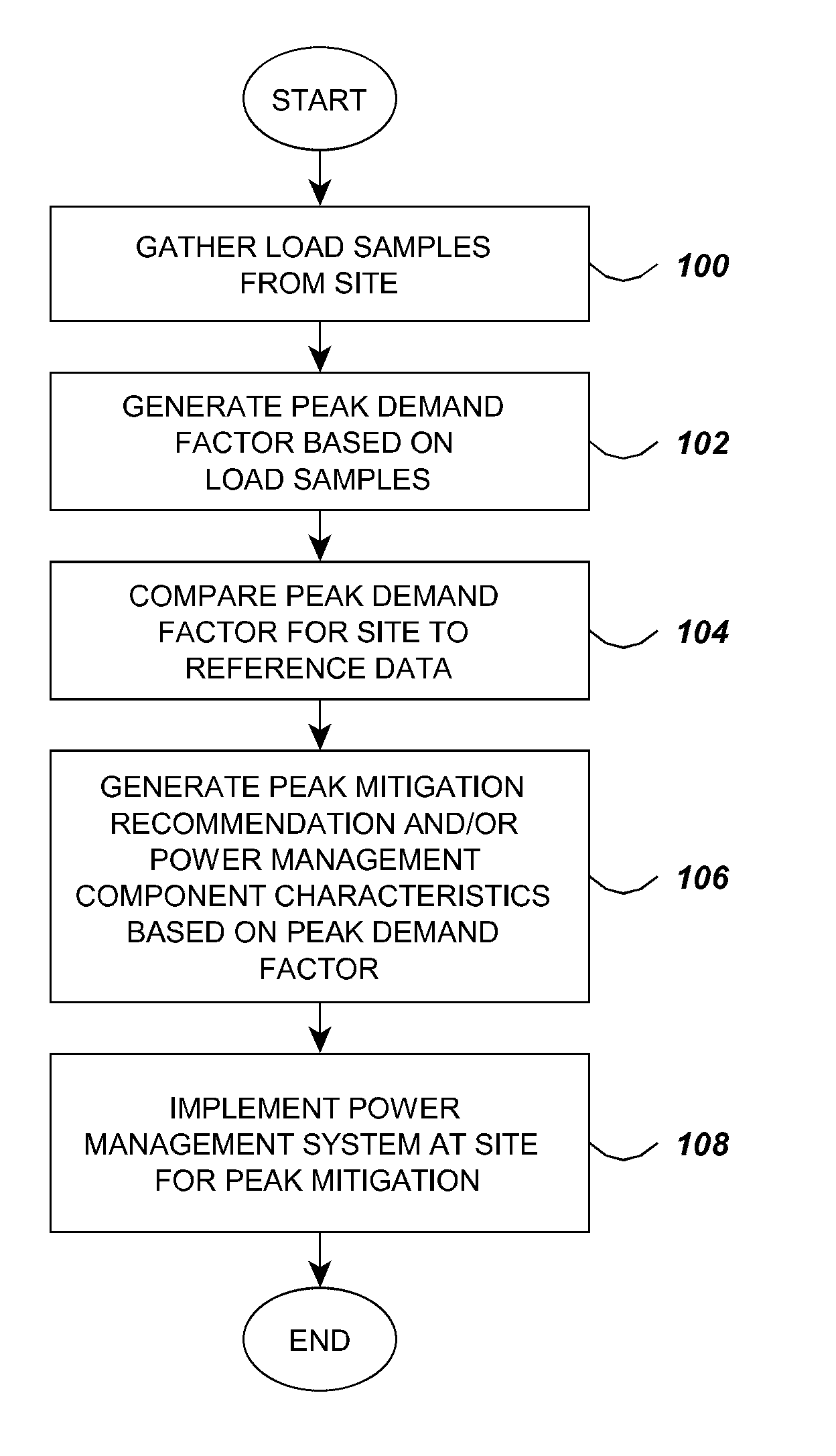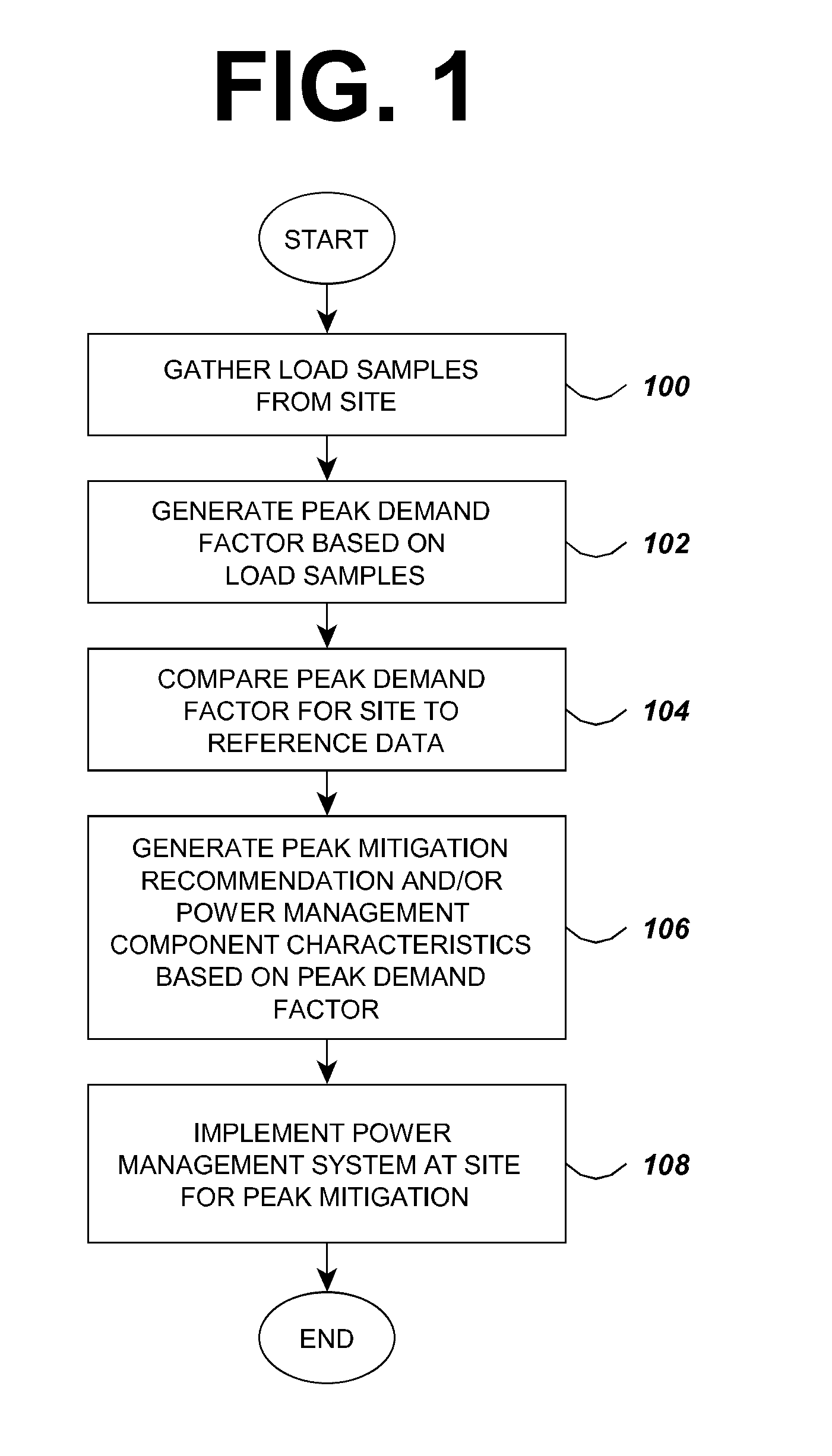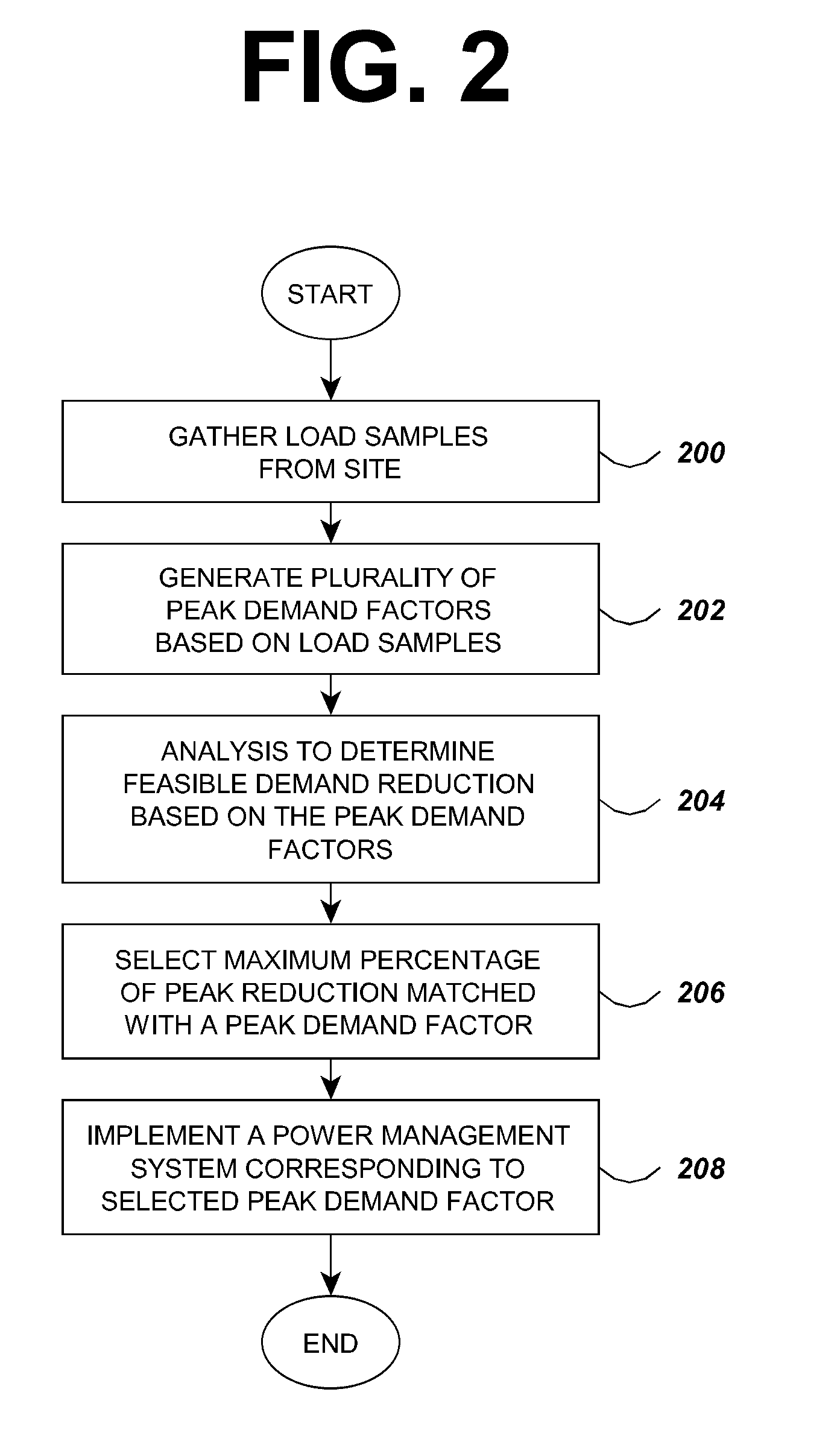Implementing power management systems using peak demand factor
a power management system and demand factor technology, applied in non-electric variable control, process and machine control, instruments, etc., can solve the problems of high cost, difficult to determine whether a site is a good candidate, and expensive power sources of peaking plants
- Summary
- Abstract
- Description
- Claims
- Application Information
AI Technical Summary
Benefits of technology
Problems solved by technology
Method used
Image
Examples
Embodiment Construction
[0019]Peak mitigation is a process by which demand charges may be decreased or prevented by reducing the magnitude of short peaks or spikes in a location's electrical utility consumption. A peak mitigation apparatus is typically used by discharging energy storage into the location's electrical system (or by reallocating loads from the site's electrical system to energy storage devices or other independent power sources) in order to prevent the power consumption recorded by the site's utility billing meter from exceeding a maximum value. If rechargeable energy storage is present, it may then be recharged during off-peak periods to regain the energy discharged in preparation for the next peak demand event. A system controller, such as a computer, may be employed to monitor the power consumption of the site and to manage the charging and discharging of energy storage devices or the activation and deactivation of power generation in the system when appropriate.
[0020]The energy storage d...
PUM
 Login to View More
Login to View More Abstract
Description
Claims
Application Information
 Login to View More
Login to View More - R&D
- Intellectual Property
- Life Sciences
- Materials
- Tech Scout
- Unparalleled Data Quality
- Higher Quality Content
- 60% Fewer Hallucinations
Browse by: Latest US Patents, China's latest patents, Technical Efficacy Thesaurus, Application Domain, Technology Topic, Popular Technical Reports.
© 2025 PatSnap. All rights reserved.Legal|Privacy policy|Modern Slavery Act Transparency Statement|Sitemap|About US| Contact US: help@patsnap.com



